Canon EOS 1Ds Mark III - Some Experiences And Conclusions
Preamble:
The EOS 1Ds Mark III, from here on referred to as the 1Ds3, is currently Canon's flagship camera sporting just over 21 Megapixel of a CMOS sensor the size of the standard 35mm frame, 24x36mm. The camera was released towards the end of last year, 2007. As of the initiation of this page, the 23rd of May 2008, it has been in production for seven or eight months.
Up until the last two months, supply in the US had been limited. I obtained my first copy through an eBay auction BUY IT NOW offered by pmidigital/Profeel Video of Monsey, New York, an authorized Canon dealer.
First Copy, Ser. No. 623875
Upon receipt of the camera the first thing I did with it was to use it to test a copy of the Tamron 28-75/2.8 I had received from Tamron Repair Service some months back as a replacement for a copy that could not be adjusted after several attempts then was damaged in the process. It was said to have been ascertained on an optical bench to perform according to spec.
The time was late afternoon into the evening. My usual lens test brick wall unfortunately was found to have been leveled in the fast changing prime commercial area of Fort Lauderdale. It took a little bit of driving to find a reasonable replacement. But brick wall lens test should be conducted in indirect, low contrast light nonetheless to help isolate lens performance and avoid inconsistent contrast, shadows from direct sun.
This was the first inkling of the AF difficulty to come. The set mode was Single Shot. The camera simply would not focus! There were movements indicating that the lens and camera were set on auto focus, but the viewfinder was completely blurry.
I tried taking the lens in and out of auto focus, changing the camera AF mode, etc. After some fiddling, voila!, the camera was able to focus on the brick wall and the test proceeded uneventfully afterwards. Also brought along for comparison was the 24-70/2.8L. Similar shots were taken with the L lens for comparison without incident.
Bonus: The two series were compared on a Dell 30inch 2560x1600 resolution monitor on an Intel Quad-Core machine, via the Browser EX and Digital Photo Professional software supplied with the 1Ds3. After four copies and three trips to Tamron Repair indeed I finally had a good copy that could be said to be preferable to the L lens.
AI Servo AF Automatic Multi-Point Test With The 400/5.6L
The 1Ds3 is capable of 5 FPS according to specification. This would be the minimum frame rate for an action sequence. So I availed myself to some bird-in-flight (bif) photography with the standard and highly popular 400/5.6L lens for the purpose. It was a sunny morning on the Florida east coast. The pelicans were performing spectacular dives for fish.
The AI Servo AF was in the standard factory supplied automatic focus point selection mode. Clearly something seemed amiss. The focus was slow to acquire yet subsequently visibly unstable going in and out of focus (oof) even in the steady tracking of pelicans coasting. Pelicans which should have been easy targets as bifs go because of their substantial size and relatively slow speed during glide and predictable flight proved to totally confound the camera. The focus simply went crazy with the pelicans in the waves and reacted to every movement of water in the periphery as apposed to the bird in the middle of the frame. Training it in the direction of the sandpipers on the sand was just as unsettling as the flocking birds presented many targets to the AF. In the end it was necessary to switch the AF to Single Shot to get some pictures of the little birds resting in the sand. So much for action shots and bifs.

Look carefully at the above screen capture of ZoomBrowser EX showing focus points. The focus is on the sand just in front of the four rear birds. As the AF kept picking different focus points I chose this compromise between the bird in front and the group behind. Look carefully at the out of focus foreground and background. Even with just 800 pixels wide file you can make out near diagonal noise rising from left to right. This is observed in all out of focus areas of all captures.

Caught unaware of potential such AF difficulties I turned to researching the Internet. After reporting the issue on some forums I began to follow threads of the 1D3's owners complaining of their problems. Remarkably a few days later at the end of April Canon released the latest firmware for the 1D3 and 1Ds3. Then it was pointed out that Rob Galbraith who had alerted the world to the focus problems with the 1D3, on that day also announced that he had been using the 1Ds3 as well and found similar issues.
All this was news to me. A while back I had heard of the 1D3 focus problem but subsequently also heard that Canon had fixed it. But never, had I imagined that the 1Ds3 released much later would be involved. I carefully examined the mirror sub assembly of my camera and found evidence that this supposedly brand new copy had been serviced. The mirror showed wipe marks left by dried cleaning fluid replete with dried droplets. The foam strips that dampen the mirror flip up left their contact footprints in the fluid swipe marks on the mirror. The date code at the bottom of the battery chamber indicated that it was manufactured in March of this year.
AI Servo Single Central Point Only Test With The Replacement, Ser. No. 629074
I posted on the Internet advising people to hold off on their 1Ds3/1D3 purchase until the picture on the AF became more clear, so to speak. I myself contacted the dealer Profeel seeking a refund only to be informed of a 10% restocking fee should I choose to do so. Alternatively I would receive an exchange without cost as according to the dealer Canon had been informed of my discovery regarding this body. Reading also of the stout defenders of the Mark III cameras I decided I owed all parties involved another go.
The replacement body, date code April 2008 manufacture, some five thousand copies later according to the serial number, arrived in the body/box/warranty card swap sans accessories. The auto focus was set to central point only as apposed to automatic point selection of the previous body. There was a piece of gunk on the focusing screen which reminded me that the previous camera also had something on the screen seen as one looked through the view finder. Since I changed the lens a couple times and also examined the mirror at length in the light I assumed that it could have been introduced during my handling. But this new camera went from body cap to the 400/5.6L in a quick swap indoors.
To maximize the performance with the 400/5.6L as micro focus adjustment was bandied about by the Mark III supporters as the cure all, I decided to do the same. With the camera focused on the number six, the central focus point frame neatly encircling the numeral, of a graduated foot level set at 45 degrees to the lens axis close to the 400/5.6L's closest focusing distance of 11 feet (plus around 8 inches), calibrating shots were taken. On screen the actual focus point fell half an inch behind to the right of the scale at 6 - 1/2 with the 6 and the 7 numerals just beginning to blur.
I tried to bring the point of focus forward -5, -10, -20 with apparently no effect. To see if it would do anything at all I also tried +20 and indeed this time the focus fell back to 7 - 1/2 with the numerals 7 and 8 just beginning to blur.
I decided to set the micro focus adjustment for this lens at -20 anyway in case it would help to bring the point of focus forward a little and went for another bif session this time in the late afternoon sun. With the central focus point ONLY activated in AI Servo, the AF dropped it schizo behavior and retained just the slow character. Examining the captures later on the 30inch high resolution screen showed that the camera was slow to acquire focus and lost it slightly on and off during tracking, presumably unable to keep up with the action. The focus point, although showed no difference during micro adjustment, had in fact been brought forward. Too much as it were.
The morning after next I repeated the exercise with the micro focus adjustment returned to zero for the 400/5.6L lens. This was the best session so far and proved the best including the two additional sessions to come. The same slowness to acquire and ease of losing tracking persisted but the performance was better in the stronger light. The ratio of in focus as apposed to simply oof was perhaps one out of three, with a handful of critical sharpness. I especially wanted to test in the strong morning sun because of the previous experience with the first body and other reports of the AF failing in strong light. Interestingly, the graininess subsided compared to the first copy. The temperature seemed similar, in the seventies air, perhaps slightly warmer in the camera held by warm human hands and under sunlight. Reviewing the results was encouraging compared to previous. I did notice that shots showing the horizon were tilting left low. I prided myself at keeping the horizon level as a second nature and thought it was odd. But due to recent severe injuries to my left elbow and right wrist in a ladder accident I was in some pain and accepting of drastically curtailed physical abilities. I had the camera neck strap on where heretofore I always held my camera bare sans strap.
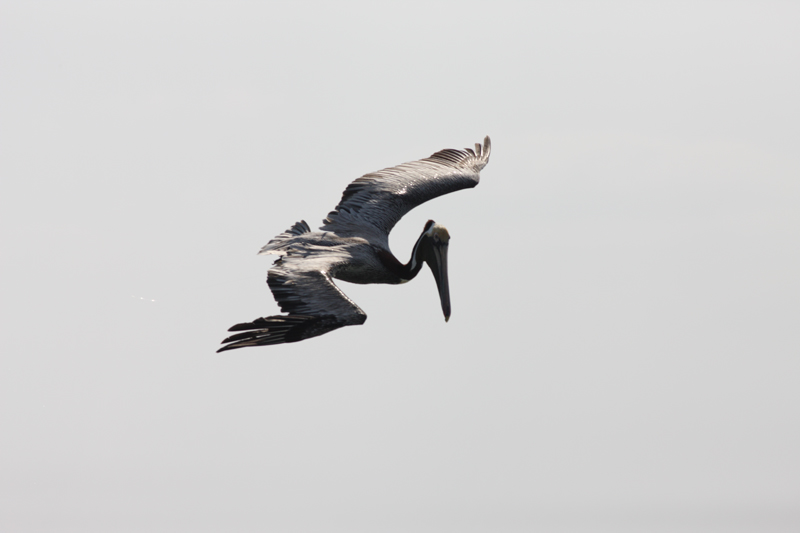
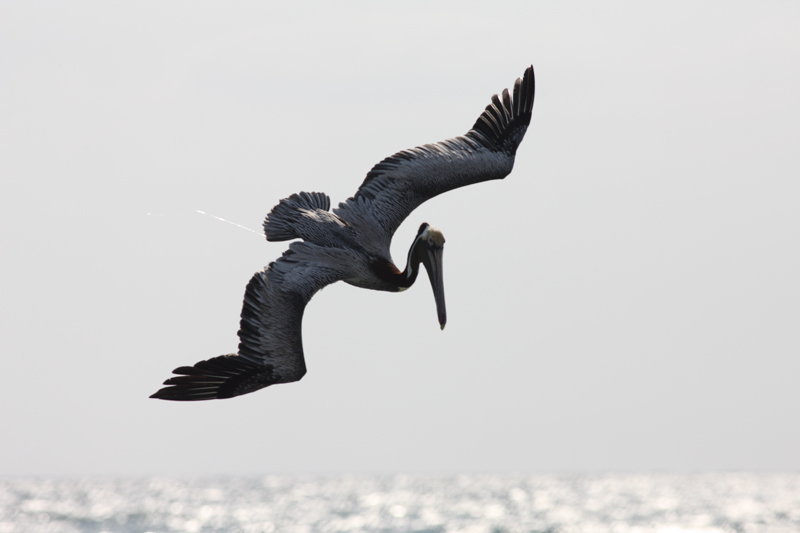
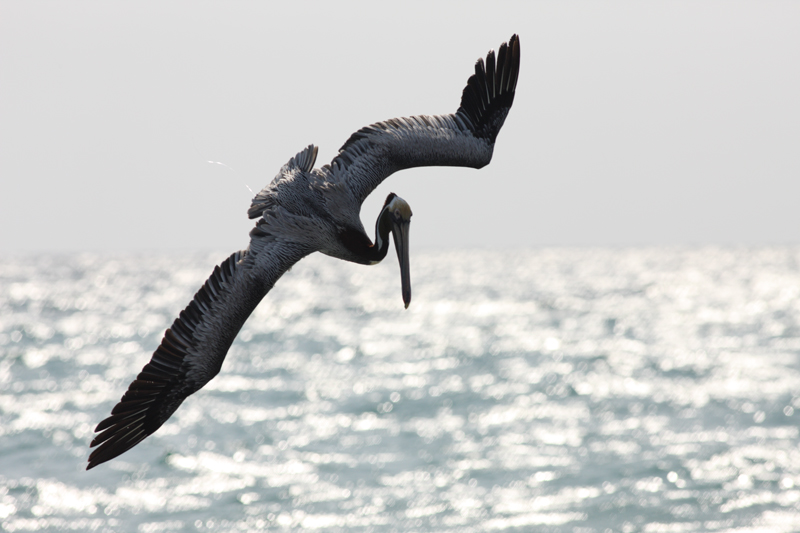
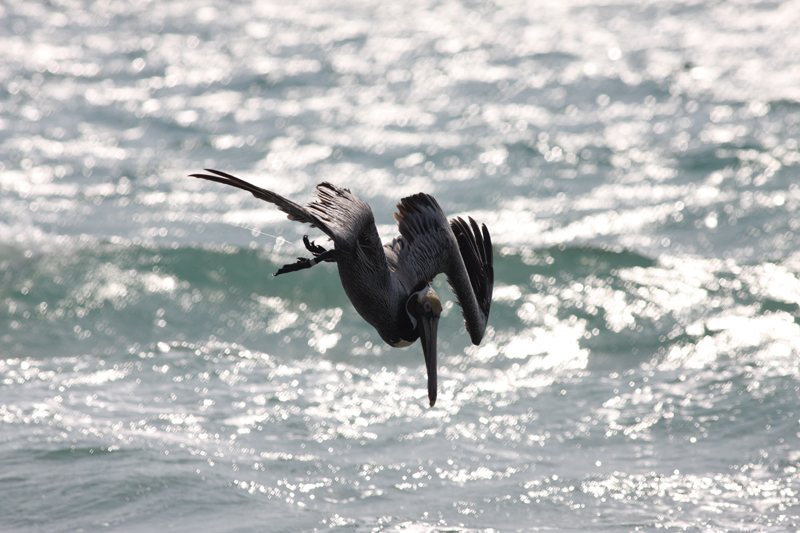
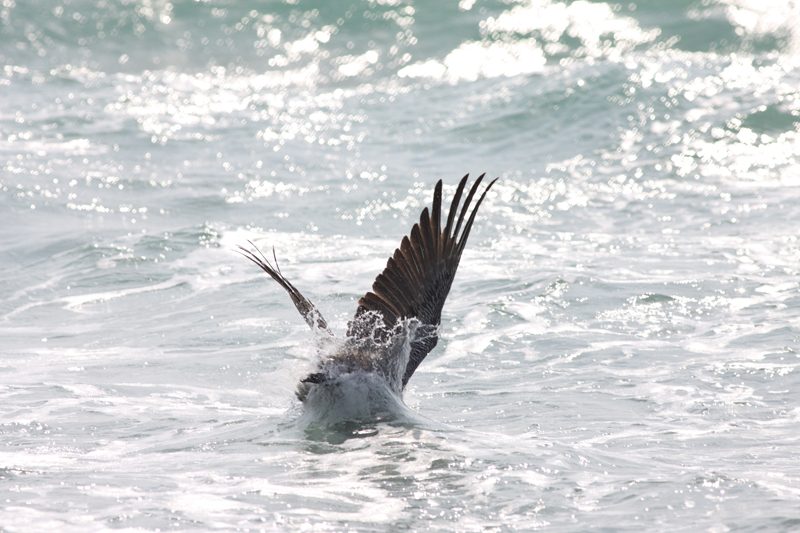
Look carefully at the sequence above straight converted from RAW using DPP with all settings standard; bit depth reduced, resized and jpeg'ed in PS CS2 with no post processing of any kind. Even though this sequence happened in one second, the pelican was obviously tracked for at least a second prior to the shutter being fired - note the correct framing of the bird from the first frame. Yet the AF was off at the beginning of the sequence and did not acquire focus until the 4th and 5th frame. Note the skyline tilt left in the third frame which approximates the skew of the VF. Although the second frame's skyline looks straight here it was actually not when I noticed it and instinctively corrected in the split second - the third frame would have been straight as it appeared to me in the VF. Frame 1 through 4 captured at 9:37:59, the last frame 9:38:00, on the 15th of May 2008. 1Ds3 - 400/5.6L 1/4000sec f/8 +2/3 stop ISO500
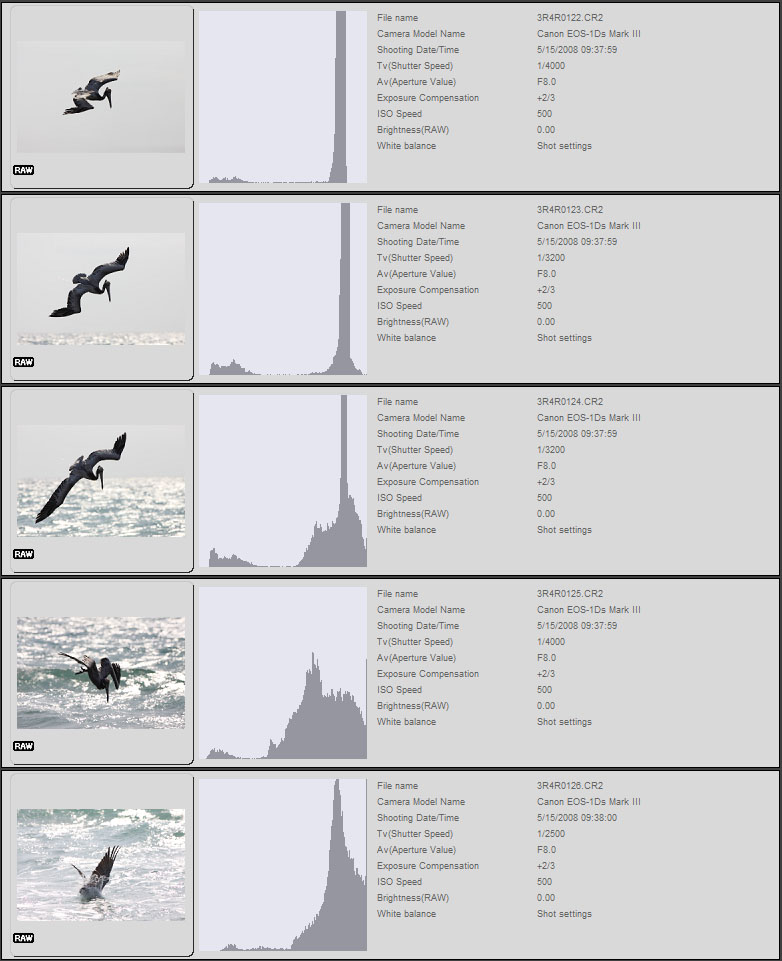
The test was repeated again with everything the same in the evening given the improved result of the morning. I should like to see if the AF would become more reliable in a weaker light as some have suggested. Each of these morning/evening sessions was about 130 frames +/- of RAW capture. Unfortunately, the result was worse under the more pleasing light. I then was ready to move on to the latest firmware to see if anything would improve. It was downloaded and installed in the camera that night.
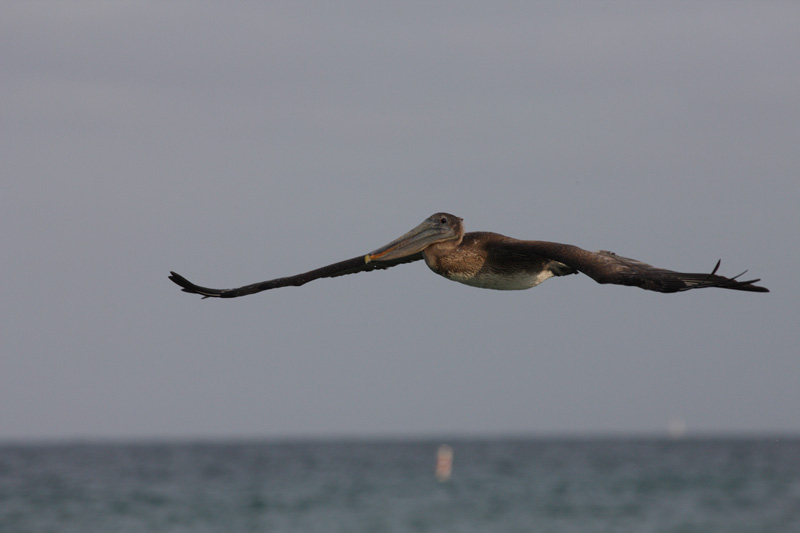
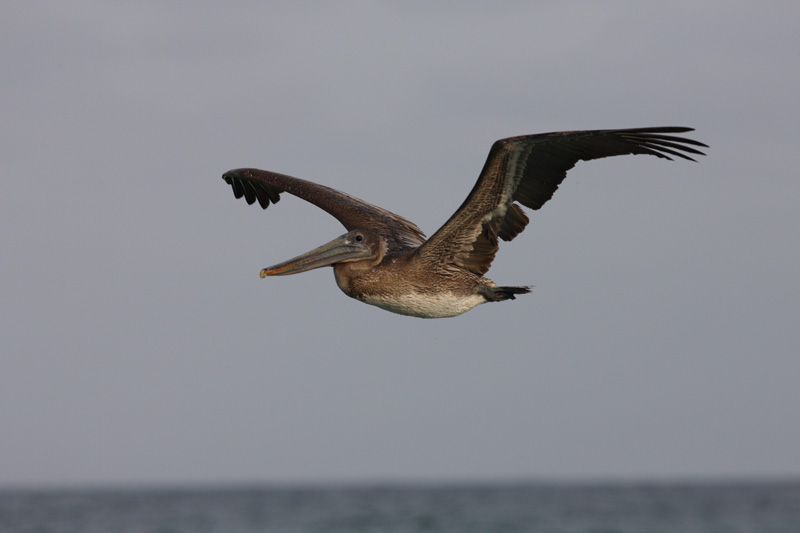

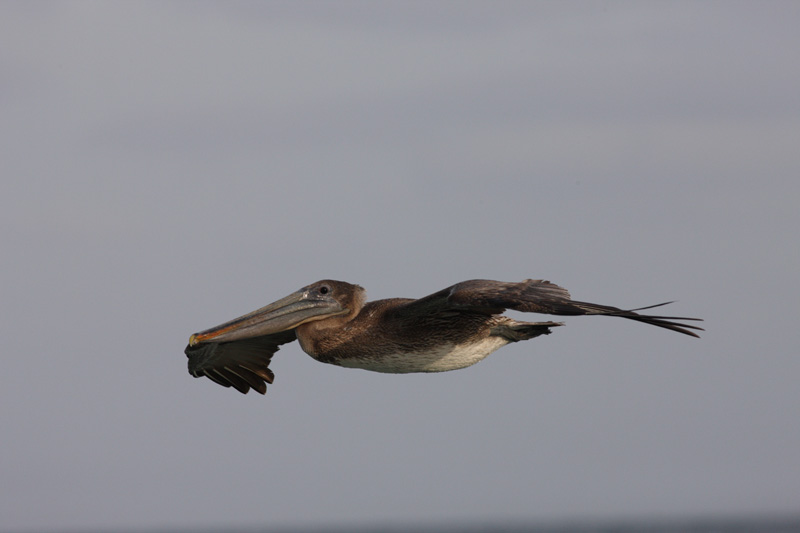
Examine the above four frames straight converted from RAW using DPP with all settings standard; bit depth reduced, resized and jpeg'ed in PS CS2 with no other post processing. These illustrate focus: slight off, on, off, on; four frames of the complete nine frames sequence with focus slight off, off, slight off, on, off, on, very off, slight off, slight off. Note that due to the extended patches of specula highlight reflecting the late evening sun on the wet beak of the bird no more than +1/3 stop exposure compensation was possible during shoot. You can see it in frame 270 above, that is washed out to white, and it becomes more massive on the beak in 271 and 272. ISO was set at 1000 to attain the minimum shutter speed of 1/1600sec seen in the last two frames. Note also the consistent skyline tilt left due to the misaligned viewfinder.
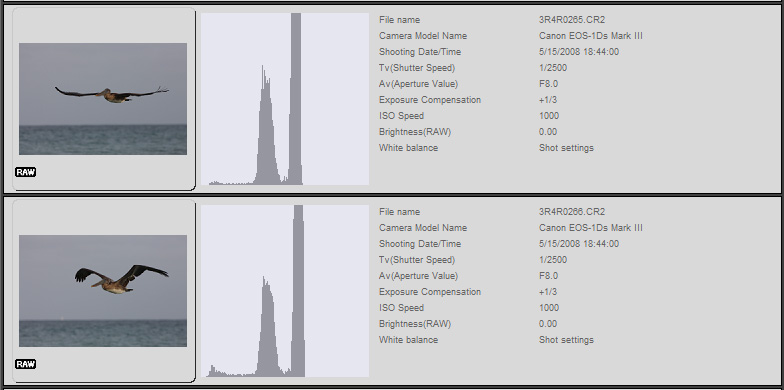
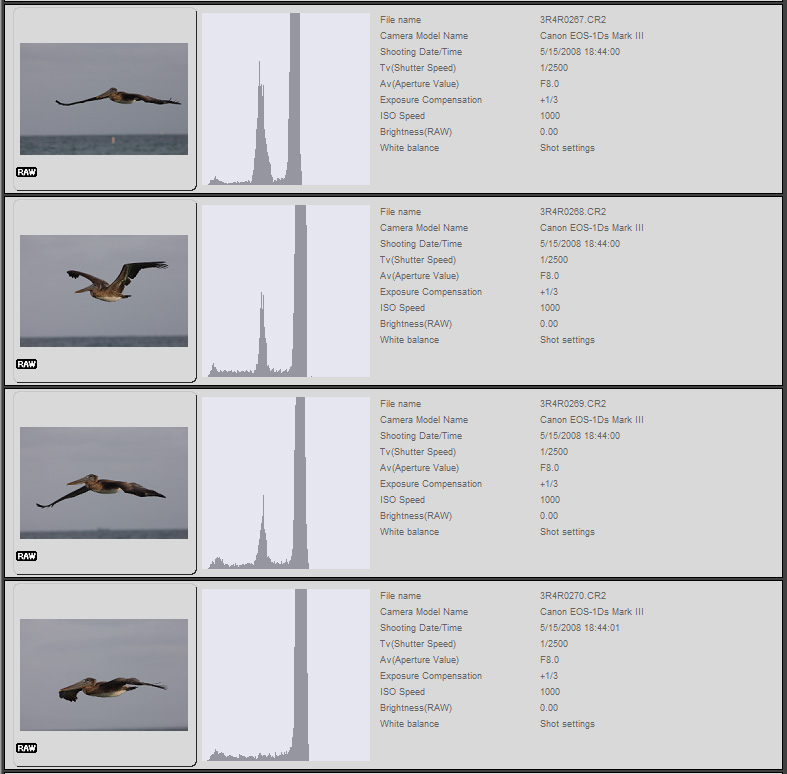
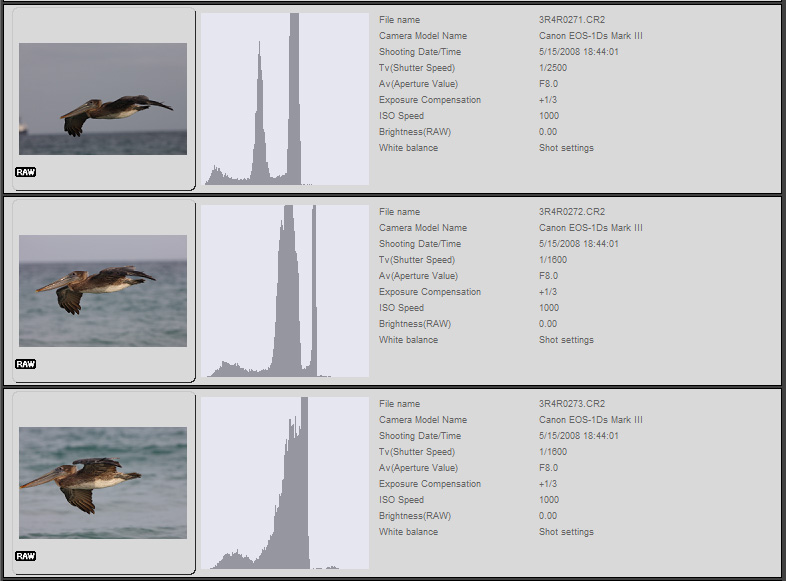
The last morning session the next day it was to be the no holds barred all out effort. With the new firmware however the AF seemed to be even slower than before. I then started to change the available AF custom settings such as making it faster to reacquire a different target, limiting focus search, etc. The performance did not impress. Switching to automatic multiple focus point selection however resulted in switching back to single point in a hurry. I was beginning to wonder if it could be used with AI Servo at all! I ended the session quite disappointed.
That day a replacement Tamron 180/3.5 Macro arrived from an excellent dealer, 17th St Photo of NYC who would exchange or refund poorly performing merchandise without hassle. This lens was reputed to be one of the sharpest available. But the first copy I ordered for use with the 1Ds3 was tested with the 5D instead while the 1Ds3 was being sent back for exchange. Sadly the first lens exhibited misalignment in that the upper right and lower left of the frame were sharp from the get go but not the upper left and lower right corners until well stopped down. This was at approximately 25 feet. At the distance of four feet from the wall, the right side was softer than the left side until well stopped down. Weird!
I decided to forgo the evening AF test as I didn't have any new tricks to get the dog to hunt any better, and the stronger morning light had proven easier on the poor thing. Instead I was eager to check out the replacement copy of the Tamron and also the view finder along the way. As soon as I leveled and plumbed the camera I noticed that I had difficulty turning the camera so the brick lines would parallel the viewfinder's frame. Doing so would result in the camera pointing obviously to the right of center. Bringing the camera back to center with the lens perpendicular to the brick wall visually and the brick lines were all off. Shocked, I brought the camera close to the wall to better approximate perpendicular and saw that the horizontal brick lines were way off. Matching the bottom of the frame carefully to a line revealed in post capture even on the camera's small LCD display that the horizon indeed sank left just like what I saw in the bif shots that included the skyline. The viewfinder of this copy was grossly misaligned! In my mind when people spoke of misalignment I was thinking something you needed PhotoShop measuring tool to ascertain. How could this much misalignment be allowed to occur in the production of a 100% view finder on a flagship camera??? To the purists, photography happens at the moment of exposure. The testament is the frame. Either it's frame perfect or it's rejected. I do not crop nor rotate my image subsequently. Such habit betrays sloppy incompetent camera handling. And this gross view finder misalignment is the ultimate testimony of sloppy and incompetent manufacturing at Canon.
Suddenly it all rang a bell with the earlier attempt to micro adjust the focus point with the 400/5.6L. The focus point was to the right of the central focus point frame because the viewfinder was skewed! I had read about this problem with the 1Ds3 VF being skewed on discussion forums while researching the AF issue after the first body but it was concluded to be a singular bad batch never to recur. Not with this latest body just manufactured last month!
Back this copy went for exchange. Unfortunately I received words from David Burns of Profeel to the effect that they could only exchange one camera and I would have to send it in to Canon to get it fixed myself. I replied that it was unreasonable for Profeel to sell defective merchandise and tell the customer to go get it fixed. Many people reported having to send their brand new 1D3/1Ds3 camera in multiple times. And while the original problem might or might not be fixed, the camera sometimes came back with additional problems that were not there before. Such is often the case with complicated opto-electronic devices today. Notably the brand new Tamron 28-70/2.8 of earlier mention. Three copies from two dealers, the last was sent in to seek better luck with Tamron Repair, three times over several months of mostly sitting at the repair shop and ended up being replaced with a new copy. Some years back I had to send back and forth a brand new Nikon 4000ED scanner for a year before receiving a replacement copy that would produce sharp scan throughout the frame. So what I have to say to people who think that it can be easily fixed: you don't know. If you didn't pay for a fixer-upper, why take on a problem? Profeel agreed to take the camera back for a refund but then tried to collect 2% to help offset eBay cost. Which would not be so bad but for the insult and accusation that I "played" with their cameras for free even while they admitted to the likelihood of defect, yet refusing to perform the definitive easy test for themselves in the case of viewfinder misalignment. Presumably they should like to continue to repeat the line that they had never seen any defect in the Mark III nor had any return. Well, with this one the latter part of the claim has to go even without admitting to the first.
As for the test result on the second copy of the Tamron 180/3.5 Macro above? This one proved even worse than the previous one. The lower half of the frame was distinctly soft with no improvement stopping down until f/8 when it suddenly snapped together. The same was true at both 25 feet and just a few feet from the wall, recalling the first copy showed two different zones of more subtle focus softness at the two distances. And if you think you can send it in to Tamron and it'll be fixed? Well, maybe, it's a single focal length prime. But you will find out for yourselves. Best thing is to buy from a reputable dealer who will exchange defective copies because the reality is with mass production you are the acting QC for the manufacturers. How hard do you want to work without pay?
AF Conclusions
What have I learned about the 1Ds3 AF system and by extension the 1D3's given that the two cameras share the same auto focus subsystem according to the 1Ds3 white paper?
1) The multi point auto AF selection is unusable in the AI Servo mode. This confirms all reports including by the defenders of the 1D3. They recommend that only the central AF point is used. Unfortunately, this really takes the camera back to the days of single point AF in 35mm SLR ages ago. Having to keep the subject dead center to obtain focus really eliminates any possibility of creative framing or the tracking of a group of subjects spread out in the frame.

Would this have been better if I could lower the bird in the frame just a little to include the whole of left wing and some space rather than having to keep it at the center like some novice? Or you don't really need an artist, just get a photocopier engineer and the result will be the same. I am not interested in bird pictures. I am interested in fine art bird pictures.

While it's ok for a fashion shooter to select another one point like to the right to track the fashion model's head on a catwalk with a vertical grip, imagine trying that with anything not so slow moving or at least big. Multiple automatic focus point selection in AI Servo is part and parcel to the effectiveness of the AI Servo mode. The additional points are there to help track the subject and allow greater freedom of framing which creates the art in the form. However, with this camera, enabling the additional points and the performance of the AI Servo tracking goes from slow and cumbersome to wildly unstable therefore unusable..
2) Even with the center point only enabled, the AI Servo AF is slow. Slow to acquire focus in plenty light, then has a hard time locking on. The illustrative is the pelican glide as tested above. Some people who shoot from afar will simply not realize this. A jet plane, a car, are a good distance away from the camera with long lens. Also folks who are happy to get a pic of their bif like a dot in the sky, to exaggerate. The reason is at further distances the DOF is much greater and the system is not really taxed to focus. Up close and the lens has to really focus and alas, this AI Servo AF struggles.
Now some people might argue that the400/5.6L used above has the max aperture of f/5.6 and the AF's capability is therefore scaled back per the manual. But they will also insist that only the central AF point is to be used, even with a 400/2.8L or 300/2.8L, say. As such the only difference is the lack of vertical detection in the central AF. Frankly if an AF point detects edges better then the big capability increase will be seen with multiple points deployment rather than the singular point in the center that could fall in the middle of a white t-shirt or the brown coat of a pelican.
3) There are numerous reports to the point of being considered the norm, that in the AI Servo AF mode on a stationary subject but with a fast lens of limited DOF, the AF continues to hunt yielding in and oof captures contrary to the 1D3 white paper which states explicitly that there is a control to prevent exactly this undesirable characteristic. While the 400/5.6L is not a fast lens, the operative environment is the shallow DOF and indeed I have observed same to the point of needing to switch to Single Shot AF as in the very first test on resting sandpipers above.
While some have reported that their 1D3 has achieved this stated specification after the upgrade to the latest firmware, they are the few indeed. Most report continued instability. This was not tested on the second body with upgraded firmware due to the return on VF misalignment.
4) The noise/artifact/graininess seen in the first body's captures was likely due to AI Servo AF interference. Around 60 degree or thereabout striation noise/artifact was observed in out of focus areas with the first sample in the morning sun on the beach. Consumed by the auto focus difficulty I first I thought it was some kind of water vapor rising up from the sand. Then I noticed same striation in the thousand ghosts of the diaphragm under glittering waves and wondered about the lens. The noise/artifact plausibly added grain to the in focus areas of the images so I thought it could be high ISO. But it was evident at only ISO200. The manual also says that higher ambient temperature can result in more noise. The morning of the test with the first copy and other mornings and evenings with the second body were warm but not uncomfortable. Yet the captures from the first body were clearly more grainy. In the end, after assessing the focus situation to my satisfaction and in looking at the files for illustration here, I had more time to deduce the evidence and my best theory is the interference from the AF.
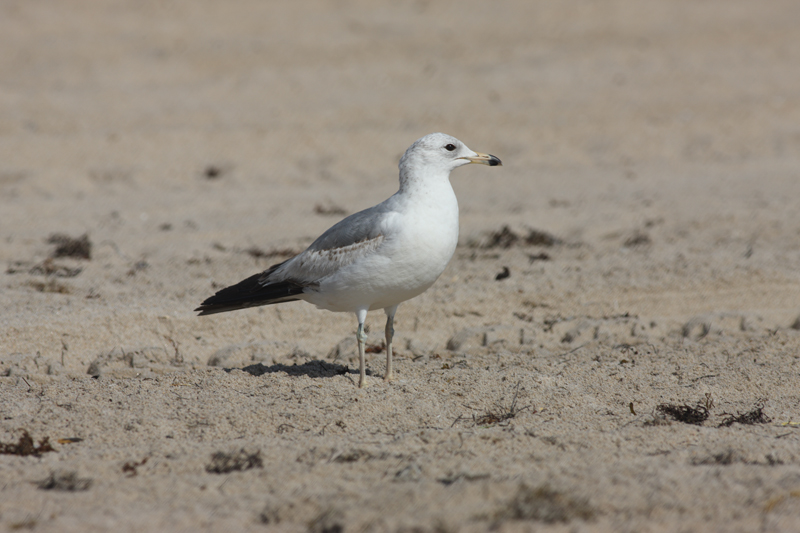
Look carefully in the foreground and in the back ground out of focus area, especially around the gull. Observe 60 degree striations that lend themselves to interpretation of electrical interference of some sort. A good candidate as any would be the AF system.

Other Conclusions
5) On a completely different note, I have noticed that the exposure of a sequence can be uneven. This results in alternate underexposure of some frames in a sequence with exactly the same lighting and taken within the same few seconds.
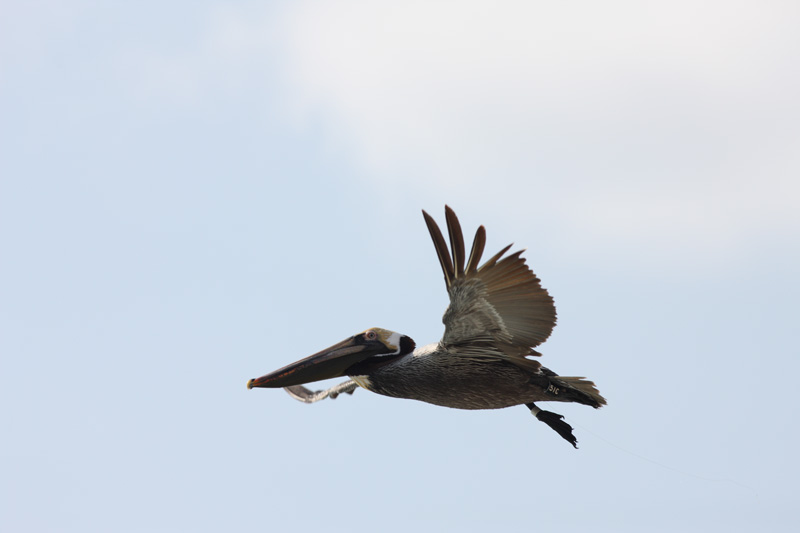
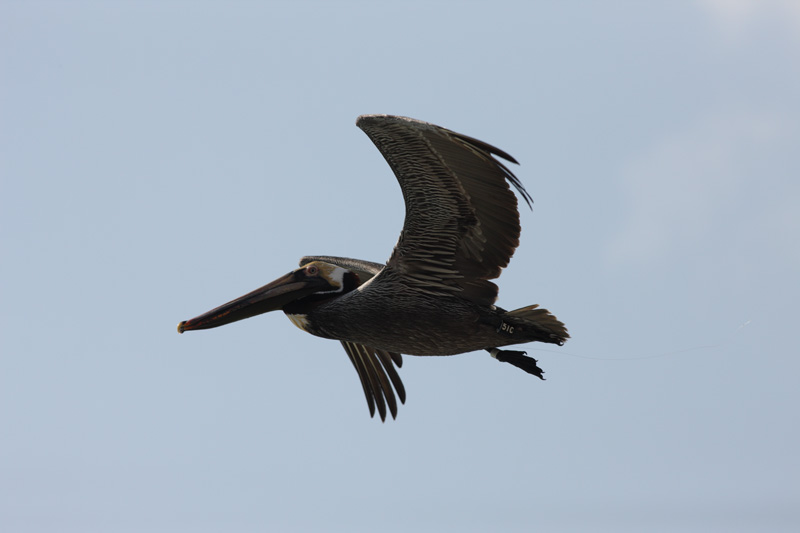
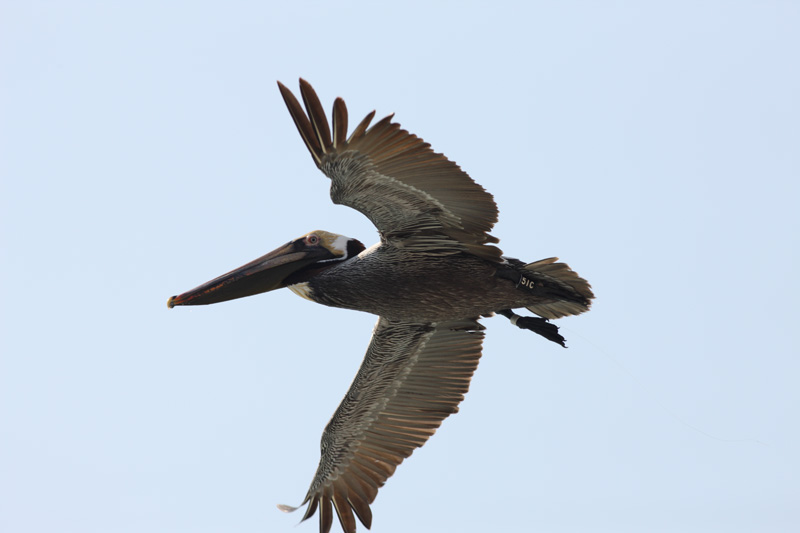
Look at the sequence above straight converted from RAW using DPP with all settings standard; bit depth reduced, resized and jpeg'ed in PS CS2 with no post processing. Even though these consecutive frames are in a sequence a fifth of a second apart, the middle frame is markedly underexposed. And although the screen capture of DPP shooting data shows frame one and two exposed at 09:45:08 and the third at 09:45:09, the development in the frames testifies to no pause. Note also that the first and the third frame show identical exposure: 1/1600sec f/8 +2/3 ISO500, while the middle frame goes off on its own at 1/2500 accounting for the half stop underexposure. These are frames 8, 9, and 10 of 11 frames sequence with focus off, off, on, off, slight off, on, off, on, on, on, on.
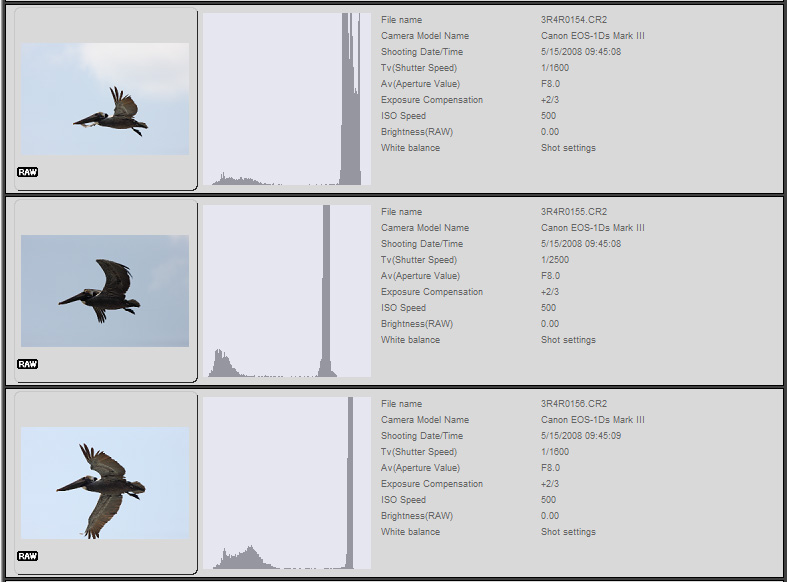
6) To achieve critical sharpness the shutter speed has to be higher than normal. In the bif filling the frame sessions here, critical sharpness would demand very high shutter speeds - with really the minimum 1/1600sec in a gamble for quality. While the higher the shutter speed will be the better to present to the sensor, there is no free lunch. As the ISO setting is raised to accommodate faster shutter in an attempt to secure resolution, the noise from amplification takes its toll. We're operating on the thin skin of the performance envelope here. Looking through DPP shooting data screen captures of these illustrations, you will see constant adjustment of ISO and in camera exposure compensation as we skirt the boundary where the various needs intersect: the minimum shutter speed required, the lowest ISO possible, the exposure compensation factor due to subject/background differential, the dictation of lens sweet spot, depth of field going against diffraction limit ruled by the sensor size and density, etc. Reflecting on this and interpreting results elsewhere on the Internet whereby in studio flash captures show definite superiority of resolution over the 5D only to be lost outdoors and it is clear that the resolution of the camera can be limited by micro vibration from mirror/shutter action as well as subject movement. Welcome to the science of photography.
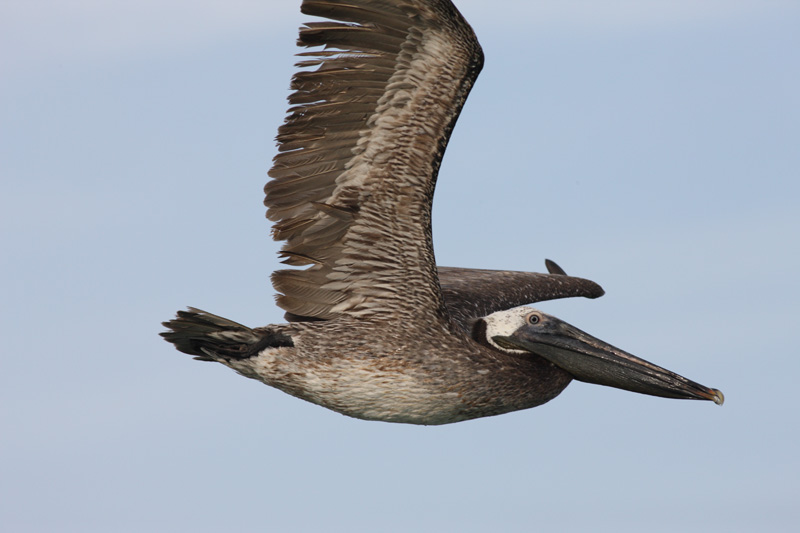
Straight RAW conversion using DPP with all settings standard; bit depth reduced, resized and jpeg'ed in PS CS2, no post processing.

Epilogue
On discussion boards one often sees some owners of 1D3/1Ds3 put up sharp and beautifully processed bif images or otherwise here and there. That is sure to elicit a splurge of comments such as "no focusing problem here!," "those other guys clearly don't know how to use the camera!," etc. So let us be reminded that success tells no tale of the trial involved. A legless person too can go around the world but in the end he's still got no legs. That's all this is, a process of discovery. Has it got legs?
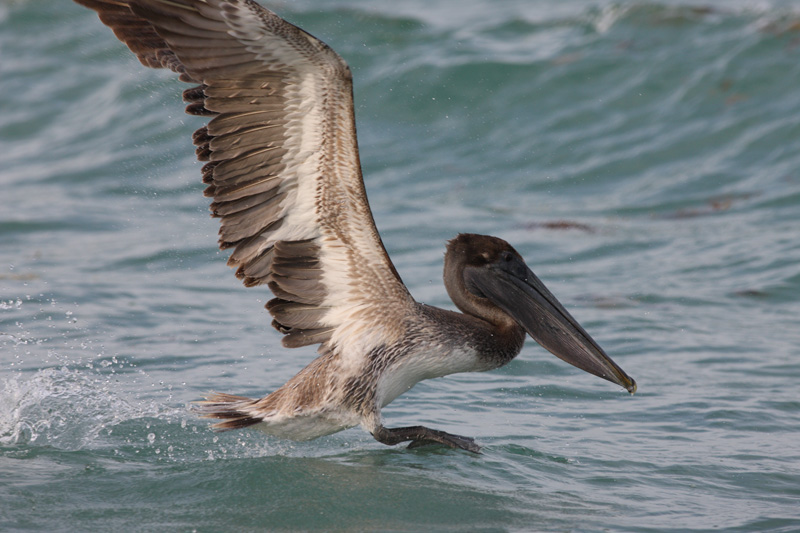
Straight RAW conversion using DPP with all settings standard; bit depth reduced, resized and jpeg'ed in PS CS2, no post processing.

Additional discussions - read this first
Additional discussions on photo.net - read this second
All rights reserved.
Tarn Tantikij
TARN Fine Art Photography
23 May 2008